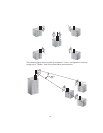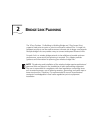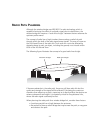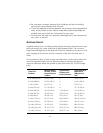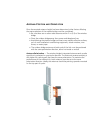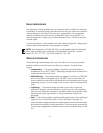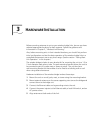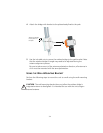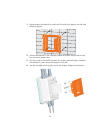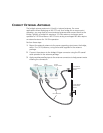
2-7
RADIO INTERFERENCE
The avoidance of radio interference is an important part of wireless link planning.
Interference is caused by other radio transmissions using the same or an adjacent
channel frequency. You should first scan your proposed site using a spectrum
analyzer to determine if there are any strong radio signals using the 802.11a
channel frequencies. Always use a channel frequency that is furthest away from
another signal.
If radio interference is still a problem with your wireless bridge link, changing the
antenna polarization direction may improve the situation.
WEATHER CONDITIONS
When planning wireless bridge links, you must take into account any extreme
weather conditions that are known to affect your location. Consider these
factors:
• Temperature — The wireless bridge is tested for normal operation in
temperatures from -40°C to 60°C. Operating in temperatures outside of this
range may cause the unit to fail.
• Wind Velocity — The wireless bridge can operate in winds up to 100 MPH
and survive higher wind speeds up to 150 MPH. You must consider the
known maximum wind velocity and direction at the site and be sure that any
supporting structure, such as a pole, mast, or tower, is built to withstand this
force.
• Lightning — The wireless bridge includes its own built-in lightning
protection. However, you should make sure that the unit, any supporting
structure, and cables are all properly grounded. Additional protection using
lightning rods, lightning arrestors, or surge suppressors may also be
employed.
• Rain — The wireless bridge is weatherproofed against rain. Also, prolonged
heavy rain has no significant effect on the radio signal. However, it is
recommended to apply weatherproof sealing tape around the Ethernet port
and antenna connectors for extra protection. If moisture enters a connector,
it may cause a degradation in performance or even a complete failure of the
link.
NOTE: For US operation of 5 GHz WDS links, avoid possible radio link disruption
from radar by selecting the following recommended RF channels -- Normal
mode: 49, 153, 157, 161, 165, Turbo mode: 42, 152, 160.



